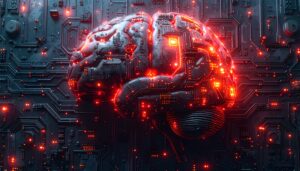(And That's Where Real Innovation Begins)
The question leaders are asking about AI is finally coming to a head. We’re moving beyond a fear of replacement and toward the fundamental question of value: “Will this technology help me create products and experiences that move my customers from where they are to where they truly want to be?”
This is the foundational question of all meaningful innovation. And in an era of AI, how we answer it will determine whether we create a lasting connection with our customers or contribute to the growing digital and physical noise.
As an ethnographer, my work is to find the answer not in the data, but in the profound, unarticulated truths of human experience, because what people say they want is rarely the whole story, and building on surface-level assumptions is the fastest path to creating waste.
The Search for Unarticulated Truth
Think about your last research project. A user might say, “I need this app to be faster.” The AI-driven solution is straightforward: optimize the code to increase processing speed.
But ethnographic observation reveals a different truth. You see them do something else: they linger, scroll aimlessly, and take a deep breath before closing the app. The unarticulated need isn’t for speed; it’s for sanctuary—a moment of peace in a chaotic day.
Building a faster app is an iteration. Designing a moment of sanctuary is an innovation. One is based on an answer; the other is based on a truth. This is the alchemy of design research: translating behavior and context into meaning. We are searching for truths people experience but have no words for, and this is a task AI is fundamentally unequipped to perform.
Innovation vs. Volume: Avoiding the AI "Spaghetti Cannon"
Generative AI makes it astonishingly easy and cheap to create endless variations. The temptation for businesses is to adopt a “digital spaghetti on the wall” approach—throw a hundred AI-generated features, designs, or products at the market and see what sticks.
This isn’t innovation. It’s a high-volume guessing game, and it creates enormous waste:

Digital and Physical Waste
It leads to bloated software with useless features that erode customer trust. It fuels the creation of physical products based on flawed assumptions that fail to connect and quickly end up in landfills.
Organizational Waste
It burns through engineering cycles, marketing budgets, and leadership focus. It creates a frenetic environment where teams are busy creating noise instead of value.
Customer Waste
It wastes the most precious resource of all: your customers' time and attention. It creates a frustrating experience where they feel unheard and misunderstood.
Deep ethnographic research is the antidote to this waste. By uncovering the unarticulated truth first, we don’t have to throw a hundred things at the wall. We can create one thing that resonates deeply because it’s built on a foundation of genuine human understanding. It’s the difference between precision and volume.
AI Manages the Surface, Freeing Us to Build What Matters
AI is a master of the explicit—what people say and do quantitatively. But it cannot inhabit a person’s world or cross the chasm from data to meaning.
This is not a threat; it’s a clarification of our purpose. The chain reaction sparked by AI should be one of focus:
AI handles the "what"
It collects and patterns the explicit data, clearing away the surface-level work.
Humans handle the "why"
Freed from the mechanics, our role is elevated to deep, empathetic synthesis—finding the truth that gives the data meaning.
Our job is to be the strategic filter that prevents waste and directs the entire innovation engine toward what truly matters.
The Irreplaceable Toolkit of the Sustainable Innovator
To bridge the gap between what AI can measure and what humans truly need, we must double down on our most irreplaceable, waste-reducing skills:
- Deep Empathy: To sense the needs people cannot name
- Integrative Synthesis: To connect disparate threads into a singular, powerful insight that becomes the foundation for a focused product
- Contextual Awareness: To understand that behavior is a product of an environment, not just a preference
- Interpretive Courage: To confidently argue for a human truth over a mountain of misleading surface-level data, and to say "no" to the 99 ideas that don't matter to make room for the one that does
The future of creating meaningful experiences doesn’t belong to the organizations with the most sophisticated AI. It belongs to those who pair powerful technology with powerful human insight. True innovation is sustainable. It respects our customers’ attention, our developers’ time, and our planet’s resources.
AI can give us a million answers. Our job is to find the one truth that’s worth building on.
Let’s discuss: How is your organization using human insight to prevent waste and focus your innovation efforts? How do you balance the temptation of high-volume iteration with the pursuit of deep human truth?





